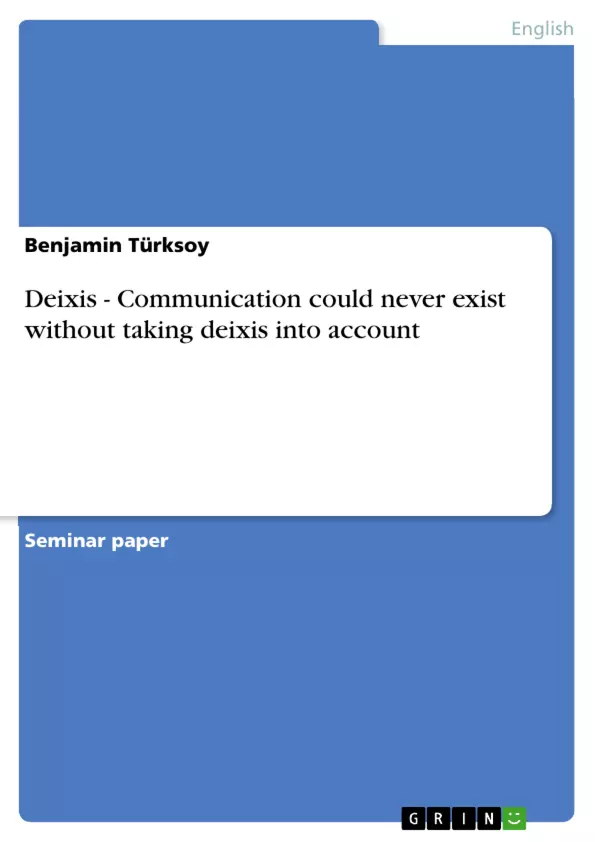In language, various ideas can be expressed in alternating ways which, in the end, can all have the same meaning. However, the speaker’s choices are influenced and restricted by linguistic factors.
The following example of a fictive story shows, how various different words can all have the same meaning “Yesterday, I went to the park and I saw a boy who killed a pigeon by throwing big chunks of bread at its head. This made me so mad that I had to walk up to the boy and yell at him. Telling him that he shouldn’t have done what he did, he told me that he didn’t do it intentionally.” In this little story, “this”, “what he did”, and “it” all refer to the action of the boy killing the duck with a piece of bread.
When the speaker of the story chose the pronoun “it”, he must have thought that his audience would easily identify “it” as the action of killing the duck. Speakers often tend to use pronouns instead of using the antecedent because it simplifies and shortens speech analysis. However, sometimes speech analysis can become very complicated and pronouns confuse the listener, let alone simplify the discourse. For example:
(1) “Peter hit Harry. After this, he didn’t like him anymore.”
In this case, the listener would have to have contextual information to determine whether Peter did not like Harry anymore or vice versa. Just from reading the sentence, the reader would not know what is really going on. As in this example, or in many other utterances and texts, where chains of pronouns strike the audience, discourse analysis becomes highly complicated.
Inhaltsverzeichnis (Table of Contents)
- Introduction
- Pronouns
- Deixis
- Person Deixis
- Time Deixis
- Spatial/ Place Deixis
- Ambivalent Functions of deictic Expressions
- Bibliography
Zielsetzung und Themenschwerpunkte (Objectives and Key Themes)
The objective of this text is to explore the concept of deixis in language, focusing on the role of pronouns and their deictic functions. It aims to analyze how different linguistic expressions can convey the same meaning while being influenced by linguistic factors. The text delves into the nature and types of pronouns, including deictic and textual pronouns, and their connection to deixis. It also examines the different categories of deixis, including person deixis, time deixis, and spatial deixis.
- The role of pronouns in language and their influence by linguistic factors
- The distinction between deictic and textual pronouns
- The concept of deixis and its various categories (person, time, and spatial deixis)
- The importance of contextual information for interpreting deictic expressions
- The complexities of discourse analysis when dealing with chains of pronouns
Zusammenfassung der Kapitel (Chapter Summaries)
Introduction: This chapter introduces the topic of deixis, highlighting how different linguistic expressions can convey the same meaning, yet the speaker's choices are influenced by linguistic factors. The chapter uses a fictional story as an example to illustrate how various words can refer to the same action, emphasizing the importance of context in understanding pronouns.
Pronouns: This chapter defines pronouns and distinguishes between deictic pronouns, which refer directly to individuals, and textual pronouns, which refer anaphorically to an antecedent in the text. It emphasizes the complex nature of pronoun comprehension, which is dependent on multiple factors, including function, position, morphology, and context.
Deixis: This chapter defines deictic expressions as linguistic elements that require reference to the extra-linguistic context for interpretation. It identifies person deixis, time deixis, and spatial deixis as the three basic types of deictic expressions, discussing their functions and examples.
Person Deixis: This chapter focuses on person deixis, which refers to expressions indicating the speaker, addressee, or other participants in the speech event. It provides examples of person deixis using personal pronouns and explains how they are interpreted based on context.
Time Deixis: This chapter examines time deixis, which refers to expressions indicating the time of the speech event, such as adverbs of time and tense forms. It explores how time deixis can be used to locate events in relation to the time of speaking.
Spatial/ Place Deixis: This chapter discusses spatial deixis, which refers to expressions indicating the location of the speaker, addressee, or other entities in the speech event. It analyzes how spatial deixis can be used to locate objects and events in relation to the speaker's position.
Schlüsselwörter (Keywords)
The text focuses on key concepts like deixis, pronouns, deictic expressions, person deixis, time deixis, spatial deixis, contextual information, discourse analysis, anaphora, and speech event. These terms are crucial for understanding the various aspects of deixis and its role in language.
- Quote paper
- Benjamin Türksoy (Author), 2007, Deixis - Communication could never exist without taking deixis into account, Munich, GRIN Verlag, https://www.grin.com/document/189742



